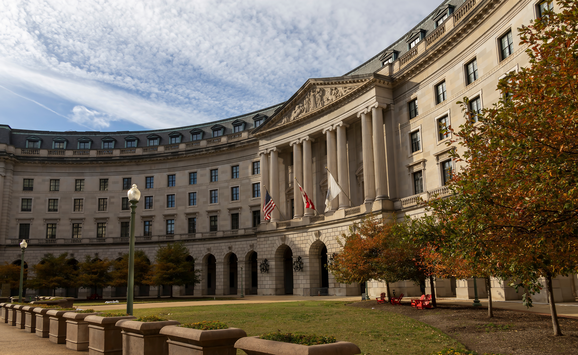New numbers show outdoor recreation contributing to the US economy, but public lands that support that recreation face issues that need to be addressed.

The US Department of Commerce Bureau of Economic Analysis (BEA) recently released its first official measurements of the contribution of outdoor recreation to the US economy. The results? Outdoor recreation contributed $412 billion, or 2.2 percent, to GDP in 2016 and supported nearly 4.6 million jobs. In addition, growth in the outdoor recreation sector in 2016, at 1.7 percent, was slightly greater than that for the US economy as a whole.
States are also paying increased attention to outdoor recreation. Eight states (California, Colorado, Montana, North Carolina, Oregon, Utah, Washington, and Wyoming) have recently set up official government offices of outdoor recreation. The offices are measuring the contribution of outdoor recreation to the states’ economies, promoting outdoor tourism, identifying new business opportunities, and providing economic development assistance to rural communities around outdoor recreation. Four more states (Maryland, Michigan, Rhode Island, and Vermont) have established independent commissions or task forces on outdoor recreation.
The trends are evidence of a growing interest in the outdoors, access to nature, and the value of public lands for recreation. The link to public lands is, in fact, unequivocal. The website of the Utah Office of Outdoor Recreation (the first of the state offices, established in 2013) touts Utah’s “wide array of natural assets” including “54 million acres of public lands.” Montana’s website similarly mentions the state’s “unmatched resources, including approximately 38 million acres of public lands.” Washington estimates that two-thirds of the annual expenditures on outdoor recreation in the state occur on public lands.

Rock climbers ascending granite spire at Mount Lemmon Highway, Coronado National Forest, Tucson, Arizona.
But public lands are facing many challenges, so it’s important to ask: What are the implications of the new outdoor recreation economy movement for public lands management and policy?
The movement brings outdoor recreation back into natural resource policy discussions, which hasn’t happened in earnest since the 1960s and 1970s. That era saw the passage of several key pieces of federal legislation including the National Outdoor Recreation Act of 1963, which established the Bureau of Outdoor Recreation, an agency within the Department of the Interior (later eliminated in the early 1980s); the Wilderness Act of 1964; the 1965 Land and Water Conservation Fund (LWCF) Act, which provided funding for parks and conservation; and the Wild and Scenic Rivers and National Trails System Acts in 1968. In the decades since, recreation received less attention.
Having estimates of the contribution of outdoor recreation to GDP in the United States helps put the sector on a more equal footing with others that have long had such economic statistics more readily available. These include mining, forestry, and agriculture, for example, which also make use of public lands. In policy discussions that often focus (for better or worse) on how many jobs are gained or lost from particular programs or policies, having numbers for the outdoor recreation industry is helpful. (For what it’s worth, the mining sector contributed $358 billion to GDP in 2016 and accounted for 626,000 jobs.)
The new state government offices are also likely to draw more attention to public lands issues in policy and budgetary debates. Land stewardship is one of the four focal points in a new agreement signed by eight state representatives, so we can expect some focus on public lands management. But it is unclear how much that will, or can, extend to federal lands. Furthermore, the state offices have small staffs and low levels of funding; much remains to be seen about how much influence they will have in state legislatures and on Capitol Hill.

Yosemite Valley campsite
Despite these developments, the new movement does not directly address some of the problems our public lands face and it could even make some worse, including the issues of congestion and underfunding in our national parks. Utah is a good example. It has a Mighty 5® promotional campaign focused on drawing tourists to five national parks: Bryce, Zion, Capitol Reef, Arches, and Canyonland. Campsites and lodging in these parks in the peak summer season are booked far in advance, leaving many visitors to rely on hotels and campgrounds in nearby towns. This provides an obvious boost to the economy, increasing local jobs and income and contributing to state and local tax revenues. But the National Park Service receives none of this money directly and is left facing the same long-standing problems: overcrowding and inadequate resources to address repair of aging facilities and degraded infrastructure.
Sustained attention in the policy arena is needed to find solutions to these problems. The Park Service needs a careful study of alternative fee structures and other approaches to visitor management, including some experimentation across the system to learn what works. Policymakers need a serious discussion about the best ways to provide adequate annual funding for park operations. A current bill in Congress proposes using oil and gas lease revenues over a 5-year period to clear the $11.6 billion deferred maintenance backlog but this is not a permanent solution to park funding. Innovative approaches need to be put on the table, including some successful methods used at the state and local level such as park endowment funds and dedicated sources of revenues.
In addition, while figuring out how to manage visitation and pay for operations at existing sites is important, the growing demand for access to the outdoors signals that supply probably needs to increase to meet demand. This means we need analysis, debate, and discussion over how best to provide new parks, trails, and other sites for outdoor recreation. Some of this needs to take place at the state and local level—more parks may be needed closer to where people live—but federal lands are also a concern. The current administration has accelerated oil and gas leasing on public lands (much of it with tepid interest from industry) while ignoring the value those lands provide for outdoor recreation. Furthermore, Congress let the LWCF expire at the end of September, which means the only dedicated federal funding source for new parks and recreation sites no longer exists.
The largest federal land acreage is managed by the Bureau of Land Management and the Forest Service, both of which have multiple use missions—managing their lands for resource extraction and for recreation and preservation. Over the years, the agencies have tried to balance these competing uses but tensions often exist. As the outdoor recreation economy grows, we can expect these tensions to escalate. For example, livestock grazing on public lands often conflicts with recreation, such as mountain biking and off-road vehicle use, both of which are growing in popularity. Moreover, sometimes there are disagreements among recreationists over the allowable recreation activities on public lands. Hunting and off-road vehicle use versus “quiet” recreation such as hiking is one example, but mountain bikers have squared off against each other over the use of bicycles in wilderness areas. The Wilderness Act prohibits mechanized forms of transport (such as bicycles) and some mountain bikers would like to see that change. A growing recreation economy won’t naturally solve these conflicts over the uses of public lands. Sustained attention in the policy arena is needed.
By all means, let’s recognize the economic contributions of the outdoor recreation industry. But let’s also recognize the public lands supporting that industry and get to work addressing the many problems they face.







